 By Len Romano
By Len Romano
Sr. Consultant, Not-for-profit Practice, TLG
During my time as a CEO in the nonprofit sector, one issue that impacted every organization I was responsible for was losing high-performing staff members to school districts with higher starting salary ranges. Contributing to the issue were antiquated “science-based” salary policies not based on the reality of the marketplace.
The solution was not to return to the HR department to “re-rate” each job category…instead, enter the BIG TABLE Process.
Step 1: Setting the Table
We invited all the full-time exempt staff members to attend a BIG TABLE for an introductory meeting to acknowledge the issue and to get their commitment to work on the process with me. The VP of HR intentionally stayed in the background but was there to ensure we complied with state/federal laws.
Next, we created guardrails to ensure that the results would be true to the issue of outdated salary ranges not being in sync with the general marketplace. We agreed that salary ranges and performance expectations are two different issues.
Step 2: Conversations at the Table
We divided the 100 staff members into four sub-tables based on their specialty area with one guardrail: determine what would be a competitive entry-level, midpoint, and endpoint salary for your area. Each sub-table came together, and the outcome was interesting – their salary ranges were very similar, resulting in the group selecting what they felt was the best option.
During TABLE conversations, I also found we were hurting ourselves as our executives were losing key staff to other branch locations within our organization due to salary ranges that differed by position type.
Step 3: Organizing the Table
With the salary ranges (entry level, midpoint, endpoint) finalized, each group returned to their sub-table to create the requirements that staff members needed to obtain certain salary point levels, i.e., certification/training requirements, budget size responsibilities, organization-wide leadership involvement, etc.
The BIG TABLE Process ended with individuals placing themselves at the appropriate salary level based on the requirements that the sub-tables created. And then, of course, actual pay rates were adjusted for everyone.
The outcome was immediate. Staff retention increased, and people felt included and involved in the project while building mutual trust overnight.
It is not always possible to involve everyone in organization-wide issues, but with the right guardrails, a diverse representation of your workforce, and a sincere attitude to lead the process – the BIG TABLE concept can work. Give it a try and let us know how it works out! If you need help getting it started, we are here for you!

